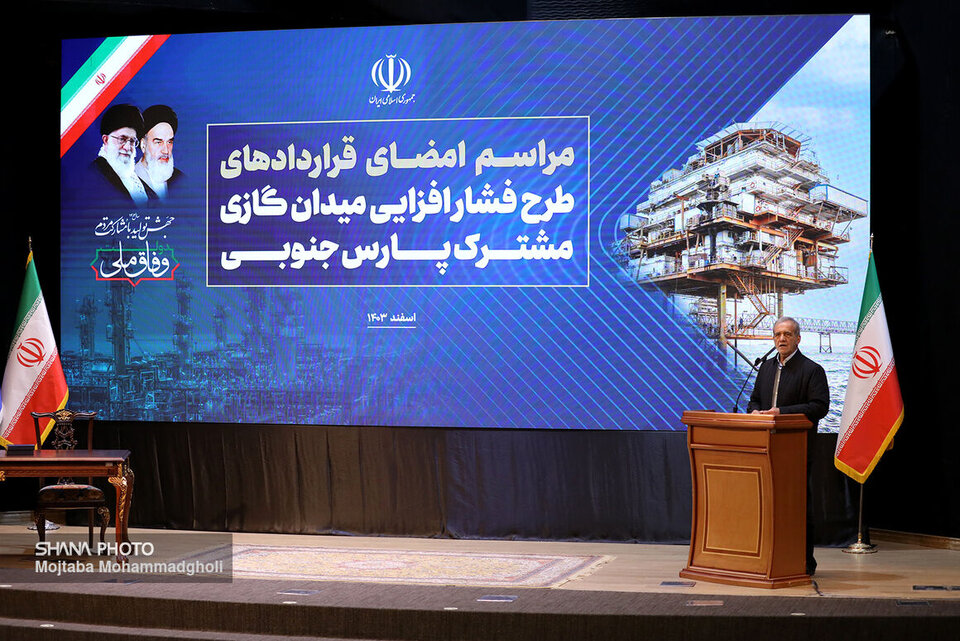Under the agreements:
- Petropars will develop Hubs 1 and 7 ($4.8b)
- Khatam al-Anbiya Construction Headquarters will handle Hubs 3 and 6 ($4.9)
- Oil Industries Engineering and Construction (OIEC) will manage Hubs 2 and 5 ($4.8b)
- Mapna Group (Nirpars Co.) will execute Hub 4 ($2.36b)
The seven hubs, worth a combined $17b, will include multiple phases:
- Hub 1: Phases 12A, 11B, 12B, 11A
- Hub 2: Phases 15, 16, 3, 21
- Hub 3: Phases 1, 5, 17, 18
- Hub 4: Phases 2, 19C, 19AB, 20, 6
- Hub 5: Phases 13AB, 10, 13BD, 14AC
- Hub 6: Phases 11, 22, 24A, 23, 24B, 14BD
- Hub 7: Phases 4, 7, 8, 9
Preventing a gas crisis
South Pars, which supplies 70% of Iran’s gas, faces declining reservoir pressure. Without intervention, output could drop sharply—for example, a wellhead pressure decrease from 120 to 90 bar would cut daily production from 1 billion to 700 million cubic feet. The 14 new platforms, each with 2 billion cubic feet/day capacity and 90-bar pressure boost capability, aim to counter this decline.
Engineering challenges
Each platform weighs ~20,000 tons, far exceeding Iran’s current 7,000-ton construction capacity. International consultants designed the structures, but domestic firms will lead execution, including sourcing four 30MW compressors per platform where possible. The "float-over" installation method will be used.
Urgent warnings
Experts and Iran’s Parliamentary Research Center warn that without action, gas shortages could hit 453 million cubic meters/day by 2031 and 579 million by 2041, risking winter supply crises. Meanwhile, Qatar’s aggressive extraction from the shared field adds competitive pressure.
Parallel measures
- Drilling 35 new wells
- Acidizing 400 existing wells
- Annual maintenance on 10-11 wells
Oil Minister Mohsen Paknejad called the project "more urgent than daily bread." With South Pars generating $130M/day across 26 phases, the stakes for Iran’s energy and economic security are immense.


Your Comment